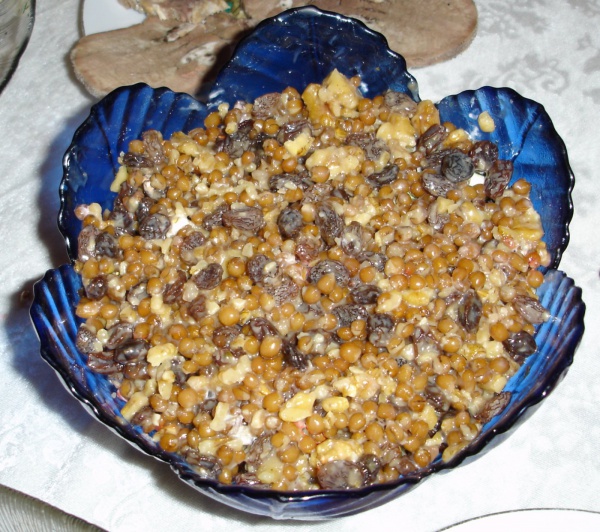Facts About Koliva
Koliva, known by various names such as kollyva, kollyba, or colivă, is a distinctive dish made from boiled wheat that holds significant importance in Eastern Orthodox Church rituals, especially for commemorating the deceased. This dish is blessed during funerals, memorial services, and other special occasions across diverse Eastern Orthodox traditions.
The fundamental ingredients of koliva include boiled wheat sweetened with honey or sugar. It is often blended with an assortment of other elements such as sesame seeds, almonds, walnuts, cinnamon, pomegranate seeds, raisins, anise, and parsley. Once prepared, koliva is shaped into a mound resembling a grave, dusted with powdered sugar, and sometimes adorned with the initials of the deceased.
Intriguingly, the origins of koliva can be traced back to Ancient Greek traditions, predating Christianity. In the Eastern Orthodox Church, koliva symbolizes death and resurrection, drawing inspiration from both biblical narratives and Orthodox Christian teachings. It is a dish not only used at funerals and memorial services but also during the feasts of saints.
Koliva is commonly seen in countries such as Greece, Cyprus, Bulgaria, Romania, Moldova, Russia, and other Balkan nations. It is also prevalent among Christian communities in the Middle East. The dish holds profound significance as it embodies the concept of life emerging from death, much like the cycle of planting and growth.
Offering koliva is a deeply rooted tradition in Orthodox Christian rituals, serving as a symbolic gesture of remembrance and hope for the deceased. The preparation and sharing of koliva carry both spiritual and cultural importance within Orthodox communities. Although recipes and practices may vary from region to region, the essence of koliva remains a powerful expression of faith and memory.
